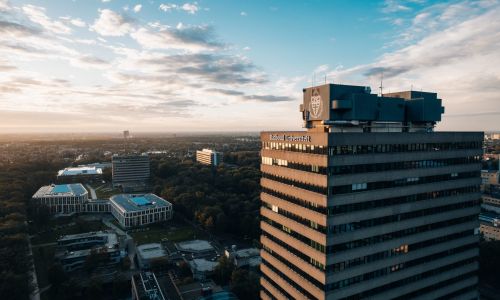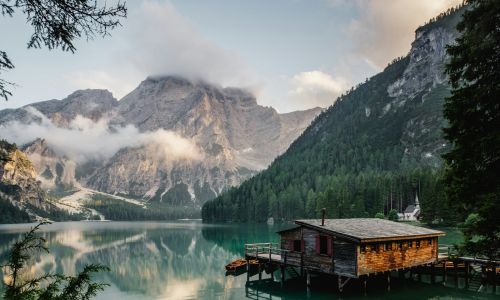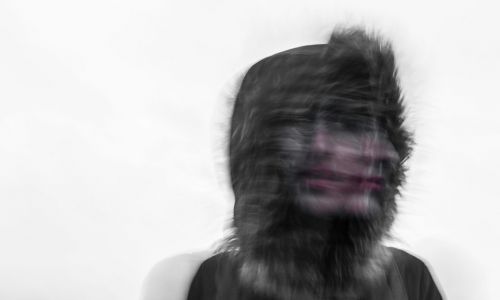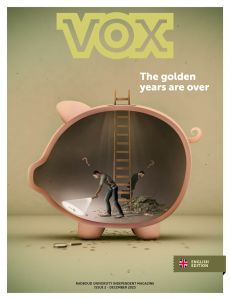Summer interview (5): Between art and the university with Ann Demeester
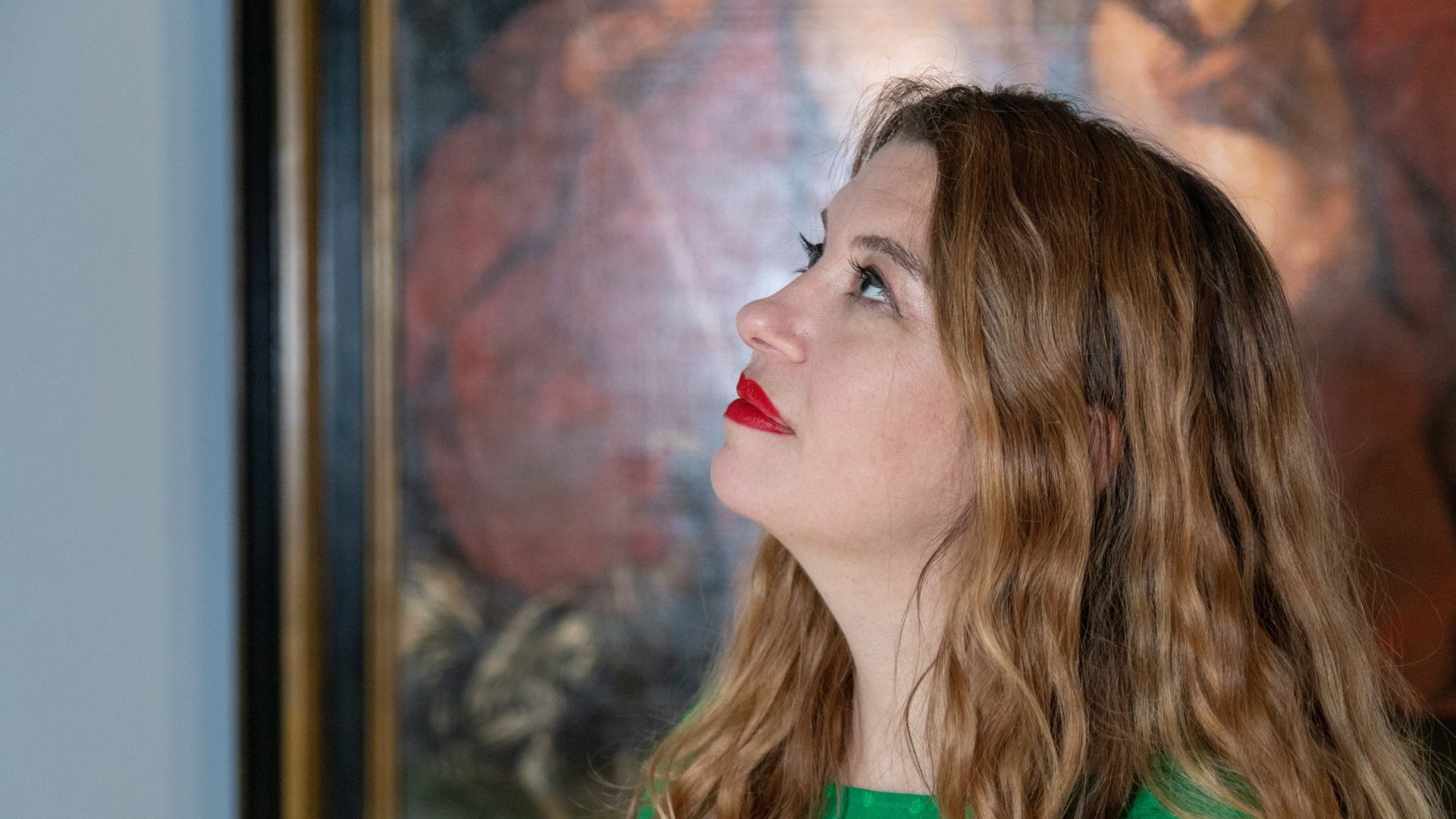 Ann Demeester. Foto: Rein Wieringa
Ann Demeester. Foto: Rein Wieringa
Ann Demeester doesn’t believe in taboos. The director of the Frans Hals Museum and a professor by special appointment at Radboud University displays works of art from diverse eras and movements opposite one another and thinks that museums should learn from the BlackLivesMatter demonstrations. “Why shouldn’t a museum director be allowed to talk about politics? That’s bullshit: everything is politics.”
Haarlem, the first heatwave of the year. At 11 am precisely, an attendant opens the large entrance gate to the Frans Hals Museum. The first visitors are allowed to trickle in to the former Home for Old Men where the works of one of the most important Old Dutch Masters and his contemporaries are on display. For well-known reasons, only a limited number of people are allowed to be in each room at the same time.
Director Ann Demeester (1975), a professor by special appointment of Art and Culture for one day a week at Radboud University since 1 January 2020, is sitting at a small table in the inner courtyard, which is normally part of the museum’s café. Now it’s very quiet if you ignore the sharp cries of the seagulls – welcome to the western part of the country.
Demeester’s assistant had warned me in advance that Demeester’s answers can be quite long. ‘You’ll have to interrupt her now and again.’ And that wasn’t a lie. The director talks passionately about art and, once she’s started talking, she forgets about the time. There’s not a subject she avoids and she thinks very carefully about how to formulate her answers.
Flemish migrant
‘I want to form a sort of trait d’union (a hyphen, ed.) between the museal world and the university,’ said Demeester, who’s married and has two children. Her professorship focuses on the notion of the transhistorical museum. In short: museum exhibits traditionally present works of art by movement, era or culture. By contrast, a transhistorical museum shows the links between objects from various eras, cultures, schools of thought and geographical zones simply by presenting them next to, opposite and in relation to one another.
Although that concept isn’t new, academic research about the transhistorical museum is still in its infancy. So Demeester wants to study the canon of art history to search for texts that are about that subject but that have never been approached from that angle. She also wants to organise symposia and seminars and she wants lectures to bring students into contact with actual practice. ‘By inviting guest speakers, we can let students experience how Museum M in Leuven or the Tate Britain develop the same idea on a different scale and in another context,’ she explained.
She exhibits works of art from diverse eras and movements opposite one another in her own Frans Hals Museum as well. ‘Frans Hals is known as a Dutch Master, but he was actually a Flemish migrant,’ said Demeester, originally from Bruges, now in her Dutch accent. ‘He was once an outsider, now he’s an insider. All of the rooms in the museum display that sort of contrast: who was popular in the 17th century and who wasn’t? Who was poor, who was rich, who has been forgotten and who hasn’t been?’
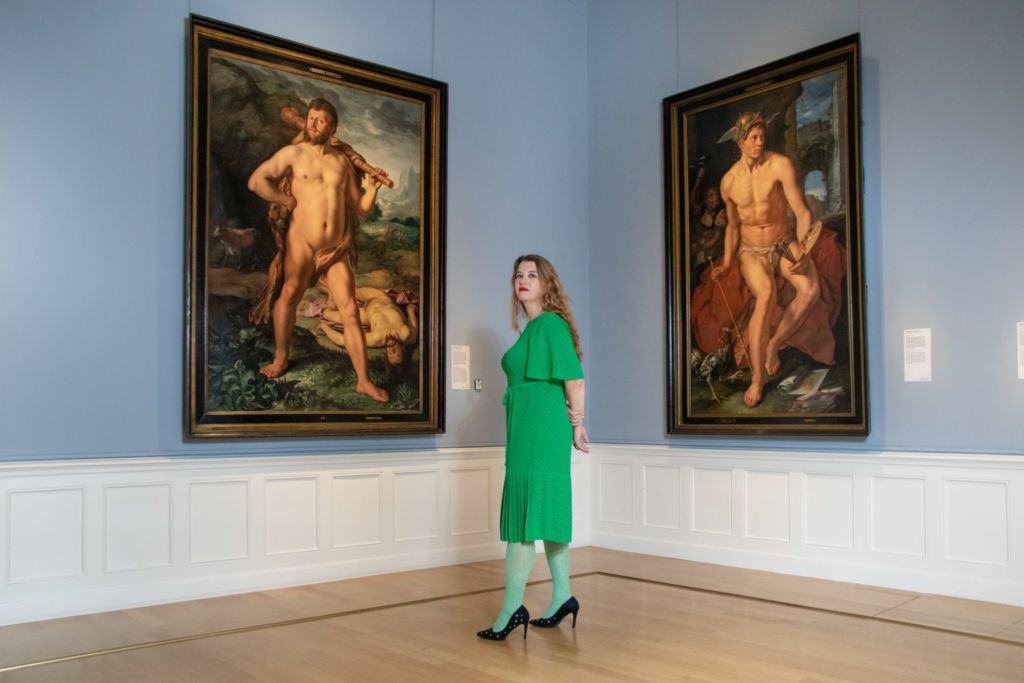
In Demeester’s favourite room three works by Hendrik Goltzius, a 17th-century etcher, engraver and painter from Haarlem, are displayed opposite a video performance by the Greek-Swiss choreographer and artist Alexandra Bachzetsis, in which three ballet dancers assume iconic poses from art history. Demeester: ‘There’s a lot going on in that room: the artworks are communicating with one another.’
Isn’t it clearer to hang artworks from the same period, movement or style side by side?
‘That appears more neutral, but of course it isn’t. Even in the 17th century, Hals and Rembrandt weren’t exhibited next to each other in a museum but rather in domestic surroundings or a salon. A museum is a 19th-century product of art-historical thinking based on the principle of separation, a form of aesthetic apartheid. But the separation isn’t necessary to the visitors’ experience.’
‘Everything you do in a museum steers the visitor in a certain direction’
‘The way in which you hang paintings is completely artificial. Everything you do in a museum steers the visitor in a certain direction. And that happens even more if you combine works of art. You can generate new stories and meanings.’
Can you simply combine any work of art with another one?
‘You put works together for a reason: because they are similar in form, because there are thematic connections or because there’s an emotional resonance. You can choose whether or not to explain the significance in a text. And visitors can discover many more associations. Sometimes it works and sometimes it doesn’t.’
‘The idea of a museum is based on a method borrowed from art history, but artists themselves make connections through time. They may see a relation between Mesopotamian pottery and Arabic textile from the 13th century and Frans Hals.’
Doesn’t that frighten people away? Many people think that art itself is difficult enough.
‘You might expect that, but only a small number of visitors are bothered by this. People who are on a sort of ‘highlight hunt’ don’t care if a contemporary work is hanging next to a Hals. Other people are happily surprised and stimulated and they think that some combinations are exciting and others uninteresting or even irritating. And you also have people who don’t even realise that works by Frans Hals are combined with contemporary art.’
Legal cases
Demeester began her career as a literary editor at the Flemish newspaper De Morgen, but she soon switched to writing about visual arts. She was discovered by the Belgian museum director and curator Jan Hoet; under his supervision, she directed various exhibits in Belgium and Germany.
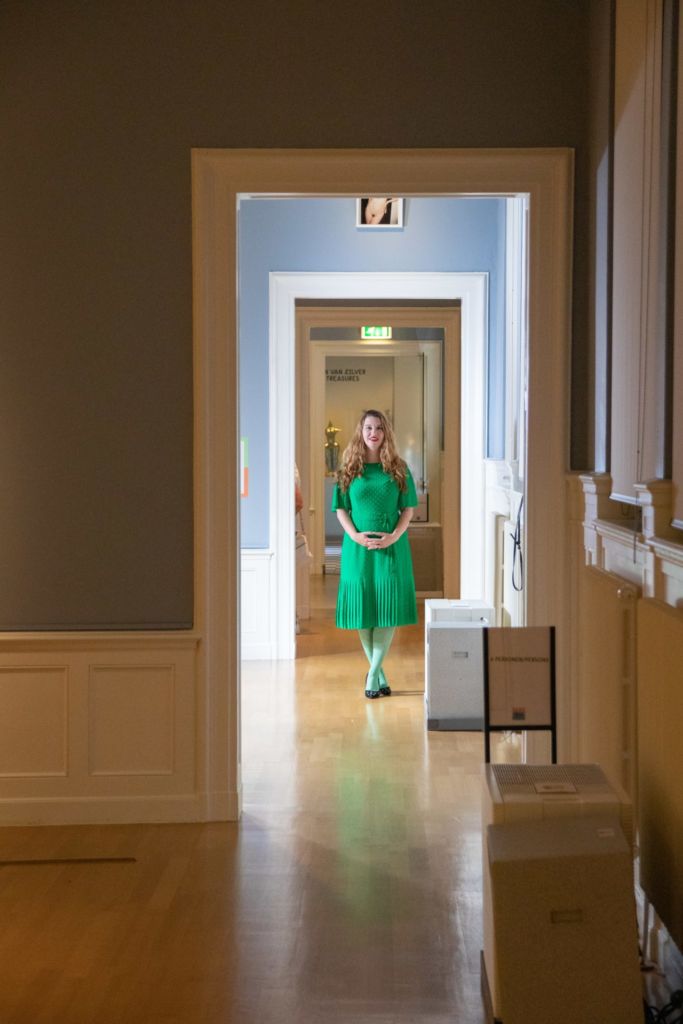
Demeester later moved to the Netherlands, where she became the director of the Amsterdam art centres W139 and De Appel, also a training programme for curators, and since 2014 she has been the director of the Frans Hals Museum.
You’re not actually an art historian. Isn’t it difficult then to be a professor by special appointment and a museum director?
‘I used to think that I had to apologise for my training in Germanic philology, but I no longer feel that way. Not that I’ve since become an art historian, but I am an art expert.’
‘I’m not from a family of academics. And to get such an honourable secondary appointment in a discipline that’s not yours does feel quite special.’
What’s most special about your job?
‘The range of tasks is gigantic, but you do it out of love for art. You’re involved in the logistics, human resources and financial aspects. And you have the final responsibility for all processes. This ranges from legal cases with real estate entrepreneurs to negotiations with the municipal government. The most exciting aspect is expounding the museum’s vision and giving form to this together with your team. Why are we here and what is our mission?’
‘In addition to your museum, you’re an art ambassador’
‘In addition to running your own museum, you’re also an art ambassador. That’s why I enjoy participating in TV programmes such as Buitenhof and Mondo: to transmit my enthusiasm to a wider audience. Lobbying at the political level, making efforts on behalf of the entire sector are also part of this.’
If you’re really inspired by art, isn’t it more enjoyable to be a curator or an artist?
‘That’s true. The curator’s daily activities involve the collection, contacts with artists and the works of art themselves. I do that at more of a fly-over level. That’s why I think it’s important to continue to create exhibitions myself now and again.’
‘I admire museum directors who switch so well between the two levels. Alex Farquharson, the present director of the Tate Britain, for example, runs part of a multinational but still maintains a childish enthusiasm about art. This is also true of Thelma Golden, the director of the Studio Museum in Harlem, who operates as a fully-fledged CEO but who still has a close tie to the practice of an artist.’
Before becoming director of the Frans Hals Museum, you were mainly involved in contemporary art…
(interrupts) ‘I’m not a career planner. Perhaps because I’m not an art historian, I’ve always had a wide and eager appreciation of all sorts of art forms. As a teenager, I started with Matisse and the Symbolists, the Flemish Primitives and Ensor have also always fascinated me. Circumstances led me to specialise in contemporary art.’
‘I’ve learned not to discriminate in art’
‘Jan Hoet taught me not to discriminate in art. That’s why I’ve never felt that contemporary art was a limitation. For an exhibition with Bjarne Melgaard (Norwegian artist, ed.), for example, I was inspired by the Pre-Raphaelites.’
You’ve been mentioned a few times in the media as a future director of the Stedelijk. Is that your dream job?
‘Speculations about positions in the art world are always complete fiction. People said that it was a shame that I hadn’t been given the Stedelijk position, but I hadn’t even applied. The Stedelijk is the flagship of modern art in the Netherlands, but it has a lot of structural problems that aren’t easy to solve. I think that Rein Wolfs (the current director, ed.) is the right man in the right place. But I do wonder if the Stedelijk will remain a museum for contemporary art in the future. The modern art collection, most of which dates from the first half of the last century, has already become history.’
BlackLivesMatter
During the lockdown, the Frans Hals Museum had to close for a few months, but Demeester didn’t just sit around doing nothing; in video clips on YouTube, she talked about the artists who now inspire her as she stood in front of works of art in her living room.
The crisis prompted her to think about the function of art in society. ‘People were in great need of escapism, the comfort and the distraction that art offers. They even imitated paintings themselves.’
What will be the post-corona function of art?
‘That’s difficult to predict at this point. I think that the link with social discussions will become larger. Part of the art world has always been very progressive with regard to decolonisation and fighting racism, but at the level of reflection and discourse. With the BlackLivesMatter demonstrations, museums were overtaken by reality. Where we were once in the forefront, we’re now in danger of falling behind.’
‘Museums are struggling with this. More than the rest of society, we are taking this problem au sérieux; but if something actually has to happen, art doesn’t lead to immediate social change – this in contrast to manifestations and other actions.’
How does the Frans Hals Museum react to tendencies in society?
‘As a museum, our programming wasn’t necessarily closely related to current social events, but much of our collection of contemporary art is explicitly politically motivated. Not at the level of action, but rather at the level of reflection. And our collection from the 16th-17th centuries is also related to a certain society. At that time the Netherlands was a global empire with all of the abuses of power, domination, exploitation, discrimination and privileges that came with it.’
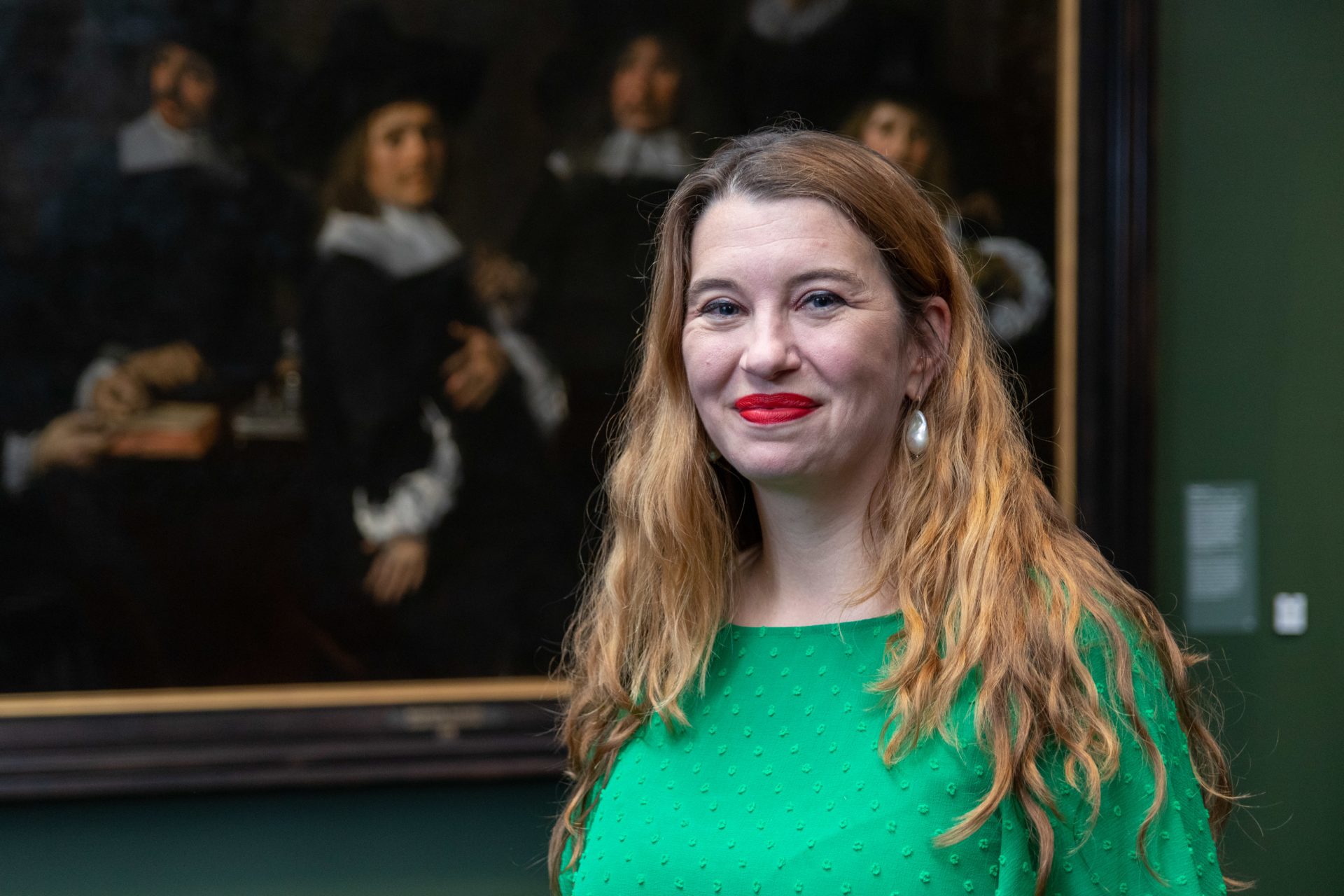
‘Since the Rijksmuseum announced plans to organise an exhibition on slavery (in the spring of 2021, ed.), something has been fundamentally changing. Museums are trying to create a change in awareness at diverse levels. Not every work from the 17th century is about slavery, but it is connected to the notion of empire. Take still lives of food, for example. They look very innocent, but they wouldn’t have existed if the Netherlands hadn’t been a colonial empire. You could find butter, cheese, eggs and wine here, but not pepper, salt, silk or Persian carpets.’
On your Twitter page, you posted a few photos of the BlackLivesMatter demonstration in Haarlem.
‘Some people think that a museum director shouldn’t make political statements. I think that’s bullshit: everything is political. Dutch society is simply what it is. Mixed. We also try to show that in the museum. Even a native white city like Haarlem is built on migration. In the 17th century, fifty percent of the population were foreigners. The Flemish married one another because they didn’t want to share their trade networks with the residents of Haarlem and vice versa. They weren’t allowed to hold political office and people wrote poems making fun of their language. All the friction between population groups that we see nowadays already existed back then. People have to become aware of this.’
‘Dutch society is what it is: mixed’
(vehemently) ‘It’s a fact that Dutch society is mixed and coloured at all levels. It’s not a question of whether you’re for or against this, but how you deal with it. I live in Amsterdam-Duivendrecht, and my neighbourhood is mixed. A demonstration isn’t enough to solve the problem. But try to practice what you preach in your work and in your private life.’
Couldn’t your political opinions be used against you? The new council in Noord-Brabant, where Forum for Democracy plays an active role, wants to decrease cultural subsidies after 2022.
‘If a museum isn’t funded because politicians think that the museum director is too left wing, then we have a very serious problem. Haarlem is governed by a coalition of D66, PvdA and GroenLinks. That’s reasonably left wing and progressive. But, in general, I believe that interest in culture and the search for a fairer society aren’t only for left-wing politicians; most parties – including the VVD and the CDA – are art-minded and culture-minded and are looking for a more balanced world.’
‘The Frans Hals Museum is a collection of Old Masters and Contemporary Art – you don’t want to fully politicise that. But if the social debate is so heated, you have to take a position as a museum director.’
Do you want to discuss these subjects with students at Radboud University?
‘Discussions about the relation between art and society, and at the more operational level between museums and politics, are crucial – definitely at a university too. I hope to not only supply input but also to learn from the students, from the insights and opinions of new generations. It sounds clichéd, but for me teaching isn’t just transmitting information and knowledge, but also changing yourself under the influence of what you learn from others.’
